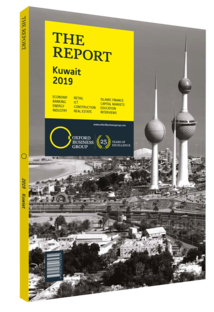Solar power in Kuwait to help reduce energy imports and recover oil from mature wells
At the 2012 UN Conference on Climate Change in Doha, the emir of Kuwait announced that the country was aiming to generate 15% of its electricity from sun and wind by 2030 – a target since reasserted in the New Kuwait 2035 vision. While this goal will help reduce greenhouse gas emissions and combat climate change, Kuwait’s desire to boost renewable energy is also linked to its aim to reduce the almost 100% share of power generation accounted for by oil and gas. Achieving this would enable more hydrocarbons to be used in higher-value-added petrochemical and refining processes, both in Kuwait and at Kuwaitibacked projects abroad (see overview).
Imports
At the same time, more renewable energy would enable Kuwait to cut its energy import bill. In recent years domestic electricity demand has grown substantially: in 2015 the country had one of the highest per capita energy demand levels in the world, at 8.9 tonnes of oil equivalent per person per year.
With generation capacity shifting from oil-fired to gas-fired, and domestic gas supplies not growing significantly, Kuwait has had to make up the shortfall by importing liquefied natural gas (LNG) to feed its power plants. The new Al Zour refinery and petrochemicals complex, for example, will also have a $3.6bn LNG import terminal to receive 11m tonnes per year when it opens in 2021.
Solar Steps
With Kuwait’s electricity needs expected to be around 30,000 MW by 2030, renewables will have to account for some 4500 MW by that date to meet the 15% target. The Al Shagaya renewable energy park, a 45-minute drive west of Kuwait City, has been the focus of this effort to date. It is being jointly developed by the Kuwait Institute for Scientific Research and the Ministry of Electricity and Water. Its first phase, which kicked off in February 2019, involves building facilities to add 10 MW of capacity from thin-film solar photovoltaic (PV), 50 MW via concentrated solar power (CSP) and 10 MW from wind. Another project nearby, the Al Dibdibah plant being put together by the Kuwait National Petroleum Company, will be entirely composed of solar PV and will add a sizeable 1.5 GW to Kuwait’s renewable capacity. In May 2019 bids from 28 companies were being evaluated to partner in the facility, with a winner likely to be announced in the second half of 2019.
The Kuwait Oil Company (KOC) has also been pioneering the use of solar power in its upstream operations. “Electricity use by the oil sector is already high and is set to quadruple over the next few years,” Raed Sherif, a solar energy consultant at KOC, told OBG. “A lot of projects need artificial lift, along with all the new refining and petrochemicals uses.”
In 2016 KOC launched a 10-MW solar plant at the Umm Gudair oilfield in western Kuwait, with electricity from the plant used to power 29 electric pumps. KOC is also seeking to use solar power to aid in enhanced oil recovery (EOR). Using CSP, water will be heated to create steam that can then be injected into mature wells to help push out heavy crude. In May 2019 KOC was in the process of evaluating bids for a 100-MW CSP EOR plant at the Ratqa oilfield as part of its broader plans to develop the north Kuwait region. The plant will be capable of supplying 3000 barrels of solar steam per day, or 1.1m barrels of oil per year.
Modern Solutions
Using solar power in such schemes does not come without challenges, however. These include being subjected to extreme heat and dust, as conventional solar panels need frequent cleaning so their efficiency is not significantly impaired by wind-blown desert sands. Luckily, new technologies have emerged to tackle these issues. California-based GlassPoint Solar, for example, has developed a greenhouse arrangement with robotic cleaners, which is currently used in Oman. In the Ratqa tender, KOC is allowing bidders to produce their own solutions to these issues, too, which is encouraging further innovation in the growing industry subsector.
You have reached the limit of premium articles you can view for free.
Choose from the options below to purchase print or digital editions of our Reports. You can also purchase a website subscription giving you unlimited access to all of our Reports online for 12 months.
If you have already purchased this Report or have a website subscription, please login to continue.

